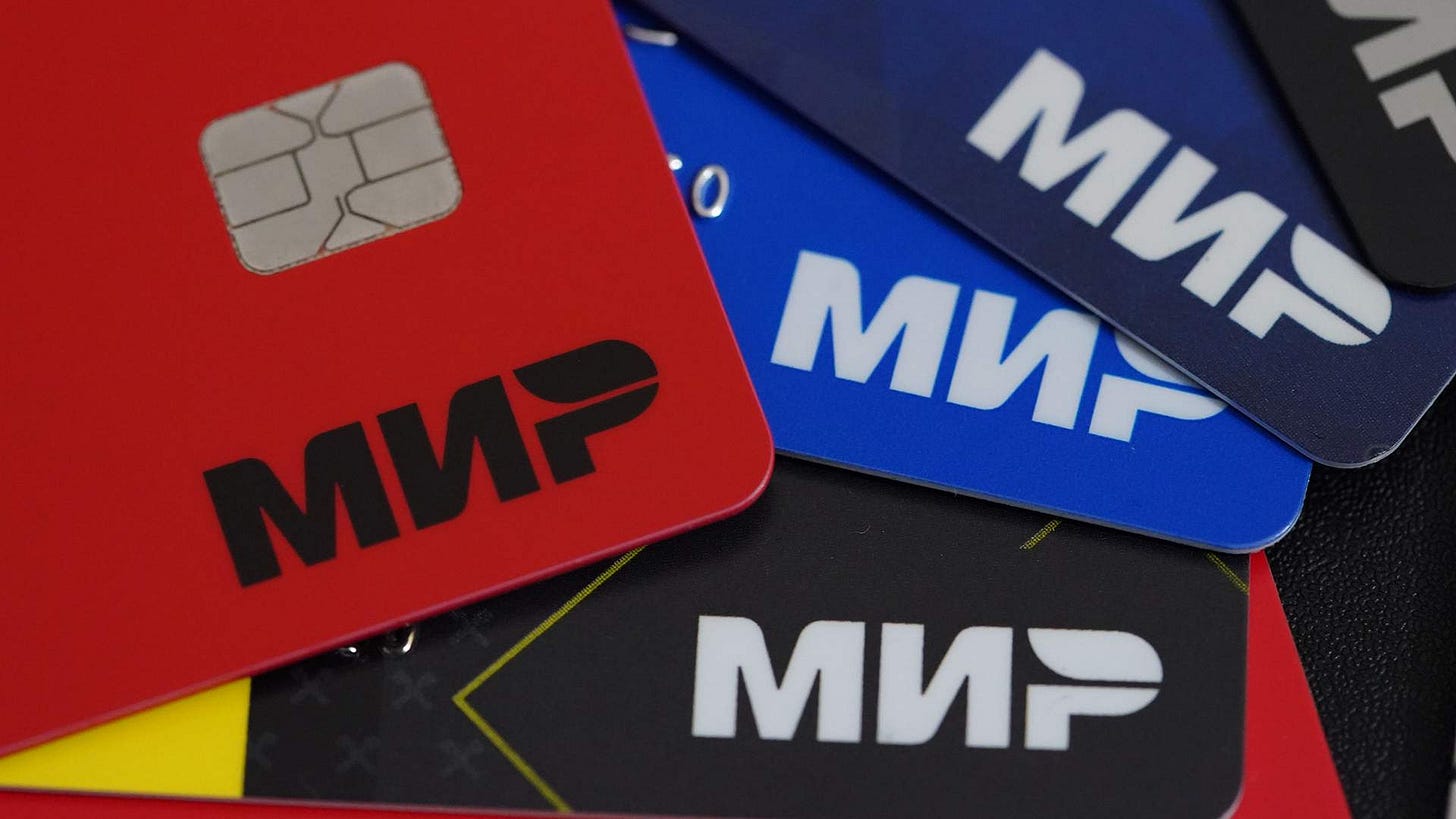Afghanistan, Russia Push Dedollarisation Amid Pakistan–US Convergence
Washington is likely to use Pakistan as a lever to constrain Afghan financial independence ambitions.
Advanced talks are underway between Afghanistan and Russia for a new agreement to integrate Russia’s MIR payment system into Afghan banks and businesses. Recently announced by Afghanistan’s ambassador to Moscow, the initiative would enable seamless transactions using Russian cards, effectively bypassing Western sanctions. According to the announcement, initial steps have already been taken towards implementing the system in Afghanistan. The project follows a February banking agreement between Iran and the Taliban, which may have represented an early step towards dedollarisation: a trend that is seeing the region, alongside much of Asia and Africa, move towards a non-Western-aligned financial network. However, despite the potential MIR deal being a significant stride towards financial autonomy, Washington appears to be leveraging Pakistan to undermine Kabul’s ambitions.
A Regional Realignment in Motion
A previous Russia–Afghanistan trade agreement promised discounted fuel and wheat supplies, but payment obstacles emerged due to Afghanistan’s exclusion from global banking systems. The MIR system offers a solution, echoing Russia’s integration with Iran’s payment network, which successfully boosted bilateral trade. The February Iran–Taliban banking accord further laid the groundwork for this, aligning Kabul with Tehran’s sanctions-resistant financial strategies and signalling a shift towards regional monetary independence.
Pakistan is also aligning through complementary steps. On 19 October, Islamabad eased barter trade restrictions with Afghanistan, Iran, and Russia — extending settlement periods, abolishing export-first conditions, and allowing private consortia to participate. These reforms encourage local currency and goods-based exchanges, accelerating dedollarisation while deepening economic cooperation within a nascent Russia–Iran–Afghanistan axis.
This regional movement unfolds against the backdrop of a broader global contest over payment systems. Western-dominated networks such as SWIFT now face growing competition from alternatives like Russia’s MIR and China’s CIPS, both driven by nations seeking to reduce dependence on the US dollar. Pakistan, already linked to China’s CIPS through the Belt and Road Initiative (BRI), could become a vital bridge connecting MIR-enabled trade via the International North–South Transport Corridor (INSTC), linking Russian goods to Gwadar Port. However, India’s Chabahar-focused branch of the INSTC, which bypasses Pakistan, introduces an element of strategic rivalry. Together, these dynamics highlight a deepening economic interconnection across Asia, the Middle East, and Africa; these regions are increasingly pursuing a shared trajectory of resistance to Western financial dominance, creating a new currency architecture.
Pakistan: The Strategic Spoiler
The timing of these developments is particularly sensitive. Israel’s recent strike on Qatar and the fragile Gaza ceasefire heighten the risk of regional escalation. Pakistan’s growing proximity to the United States, Saudi Arabia, and Israel — coupled with its involvement in Gaza’s reconstruction — positions it as a potential spoiler within the emerging Russia–Iran–Afghanistan bloc.
In the event of a wider Israel–Iran conflict, Afghanistan’s MIR partnership could provide economic resilience: Iran would sustain trade with Russia while accessing Afghan resources, and Afghanistan would benefit from greater financial stability. Pakistan’s barter reforms might amplify this, facilitating trade in rupees or goods to circumvent sanctions. Yet Islamabad’s apparent Western and pro-Israeli tilt threatens to generate friction. Increasingly, Washington appears to be leveraging Pakistan as an instrument to counter Afghanistan’s growing drive for financial independence.




